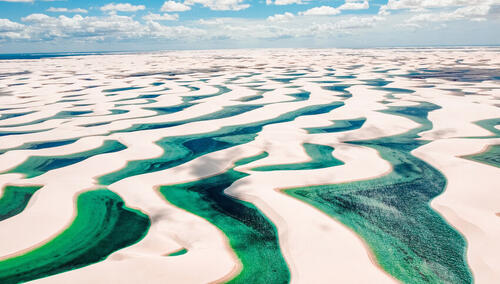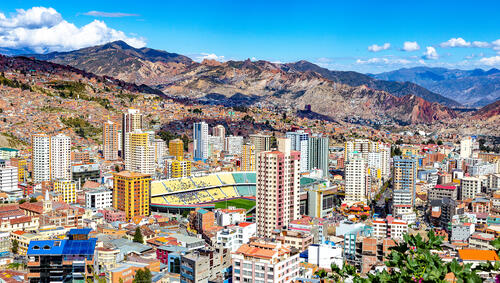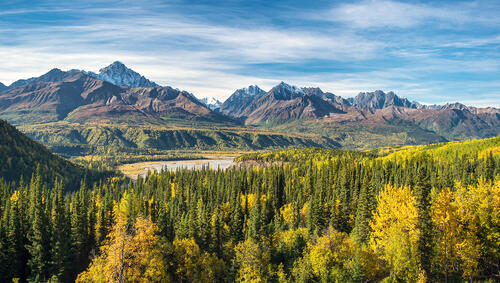Our beautiful planet is packed full of fascinating geological wonders that awe-inspiring. But there are a few extra special spots that seem downright otherworldly. Here are 10 fascinating geological wonders you won't believe are real.
Eye of the Sahara - Mauritania
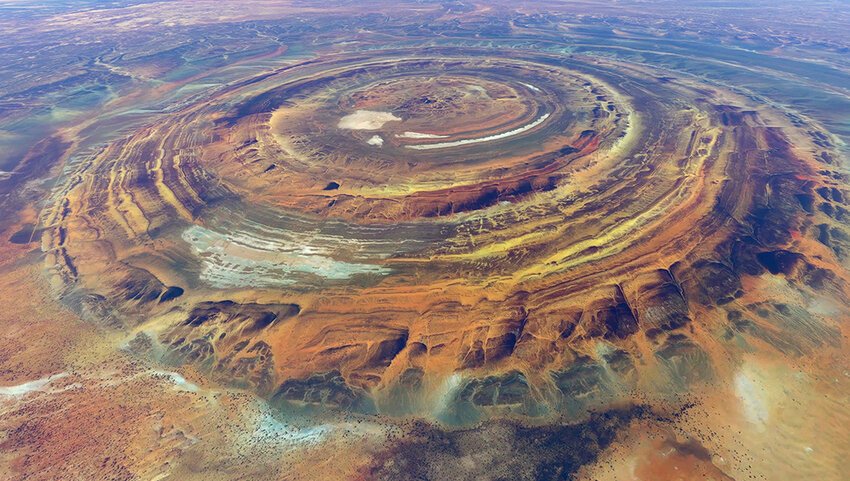
In the heart of Mauritania’s Sahara is a geologic marvel that was once claimed to be the remnants of Atlantis. Instead of a mythological city, the Eye of the Sahara is a collapsed and eroded volcanic dome in the middle of the desert. Astronauts were the first to discover the unusual geologic structure and wondered if it might be a meteor crater due to its near-perfect circular shape. The Eye’s bullseye shape is almost invisible in person but appears like a massive blue and green sphere from the window of a spacecraft. In fact, most visitors don’t even realize they’re standing in the middle of a geologic marvel. Also known as the Richat Structure, the Eye’s arid landscape is borderline inhospitable and situated in a remote area of Mauritania known as the Adrar Plateau.
Giant's Causeway - Northern Ireland
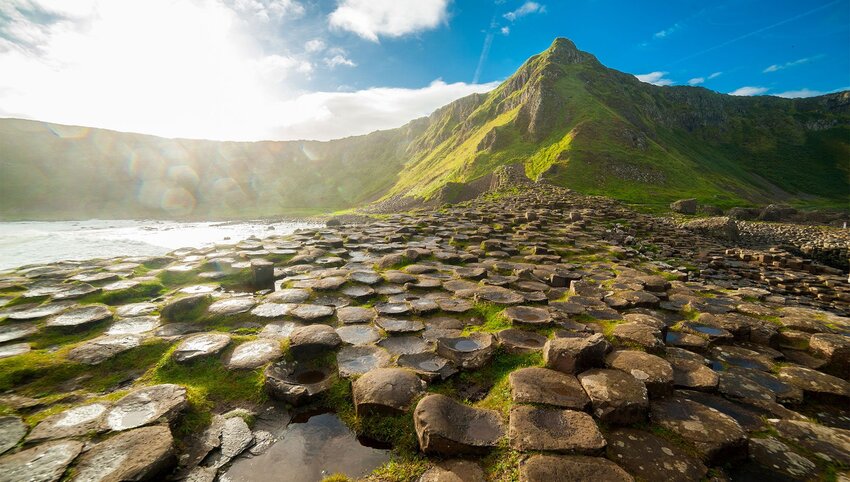
Located below the rich green sea cliffs of Northern Ireland is perhaps one of the most perplexing geological wonders in the world. Giant’s Causeway is a collection of over 40,000 hexagonal columns of ballast. The result of volcanic activity that took place in the area more than 60 million years ago, the columns' unnaturally straight edges and uniform stepping-stone shape make it hard to believe that these stones formed naturally. Giant’s Causeway gets its name from a local legend. Locals believed that these ‘stepping stones’ were created by a giant hero named Fion Mac Cumhaill to help him walk across the sea to fight a rival giant from Scotland.
Tsingy de Bemaraha - Madagascar
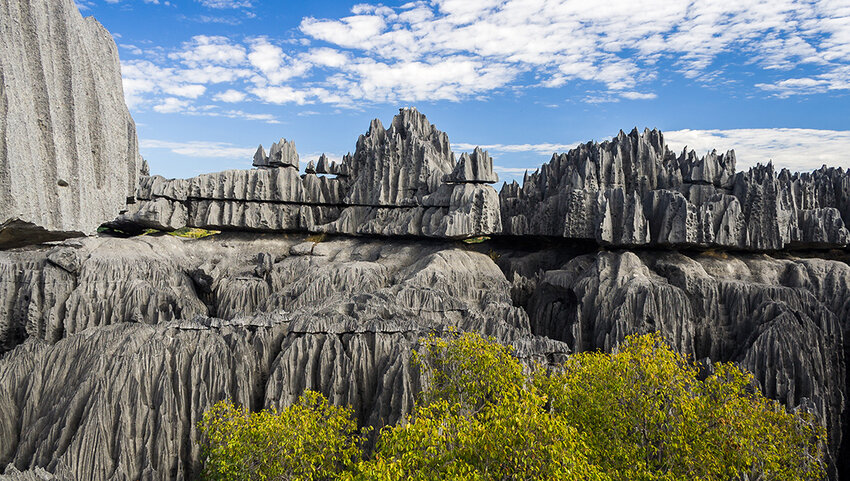
Also known as the Forest of Knives, Tsingy de Bemaraha National Park holds a fortress of jagged limestone karsts. Known as the Great Tsingy and Little Tsingy, these stone fingers reach up from the barren landscape to create both deep canyons and needle-like peaks. Created by monsoon erosion over thousands of years, this is the largest stone forest in the world. The otherworldly landscape of the park’s tsingys, the Malagasy word for “where one cannot walk barefoot,” can only be discovered through a series of suspension bridges and climbing ropes, navigated alongside a local guide. Unique geologic wonders aside, Tsingy is home to numerous rare creatures including 11 different species of lemur and vibrant chameleons, some of which can only be found in this protected park.
Marble Caves - Patagonia, Chile
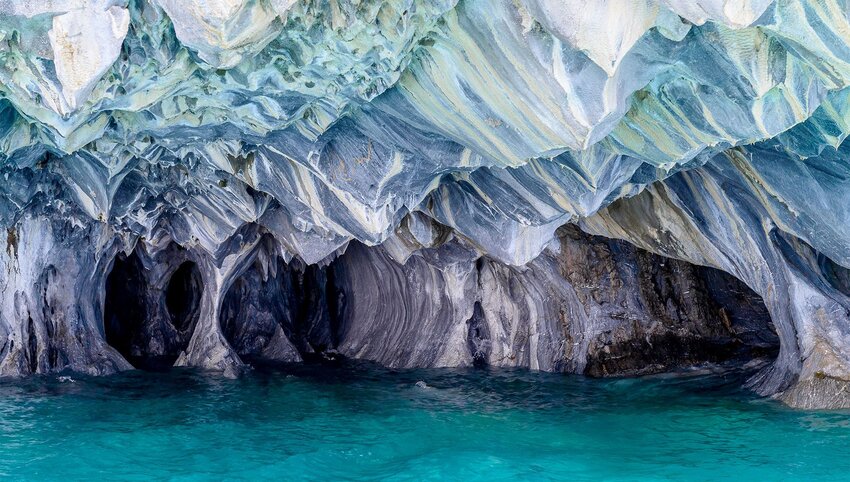
Amidst the towering snow capped mountains of Patagonia National Park is the sparkling General Carrera Lake, the largest glacial lake in Chile. Located in the middle of this lake are the astonishing Marble Caves. These caves are only accessible by boat or kayak, making them a unique wonder that many people don’t get to see. Picture this. It’s a nice warm sunny day, your kayak paddle cuts smoothly through the crystal clear water as you pass by a group of secluded rock islands. The marble caves will come into view and as the tip of your boat enters the caves, you’ll look up to a cave ceiling covered in every shade of blue imaginable- cobalt, turquoise, seafoam. Spring is when the cave’s colors are the brightest, but any time of year is a great time to visit.
Lençóis Maranhenses - Brazil
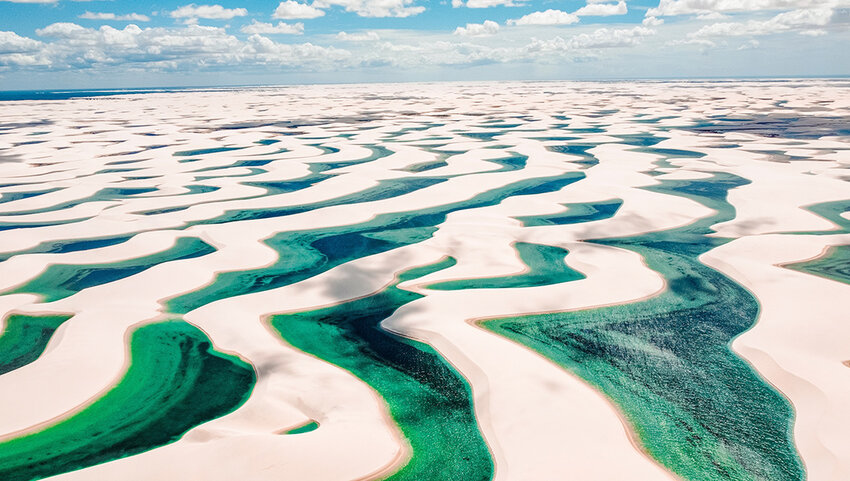
Brazil is one of the largest countries in South America and home to a mosaic of climates and ecosystems. But between its sun-soaked shores and the Amazon jungle lies a surprising landscape of rolling sand dunes reminiscent of the Sahara. Lençóis Maranhenses is a national park in northeastern Brazil, spanning a massive 380,000 acres of rolling sand dunes that stretch to the Atlantic, lush mangrove forests, and oases. Despite its appearance, this area receives an astonishing amount of rainfall every year. This is one of the most important ingredients to Lençóis Maranhenses' unique ecosystem. Designated a UNESCO World Heritage site in 2017, this spellbinding ecosystem isn’t easy to reach. You’ll need to fly into the town of Sao Luis before trekking overland for over 3 hours by bus to reach the tiny outpost of Barreirinhas. Make sure you visit between the months of May and September to see the turquoise and emerald lagoons in all their glory.
Bonneville Salt Flats - Utah, U.S.
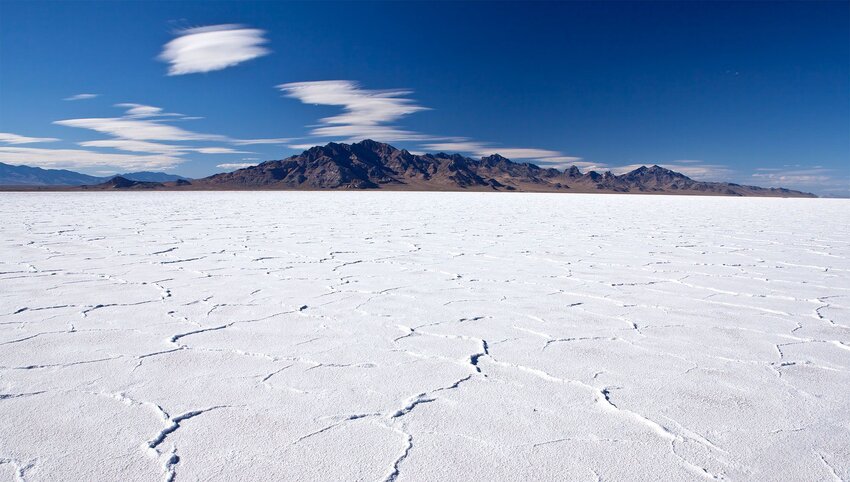
Bolivia’s salt flats tend to get all the attention, but equally stunning salt flats exist all around the world. Bonneville Salt Flats, located just 110 miles from Salt Lake City in Utah are some of the best salt flats in the United States. At first glance, the salt flats look like a large lake covered in snow, but upon closer inspection you’ll find a thick, blindingly white crust of salt at the bottom of what was a lakebed millions of years ago. In the evening, the pinks and purples of the sunset will reflect across the salt flats, bringing out the interesting hexagonal pattern of the salt. Fun fact – aside from being a geological wonder, Bonneville Salt Flats is also an international racing hub and popular place to shoot car commercials!
Cueva de los Cristales - Mexico
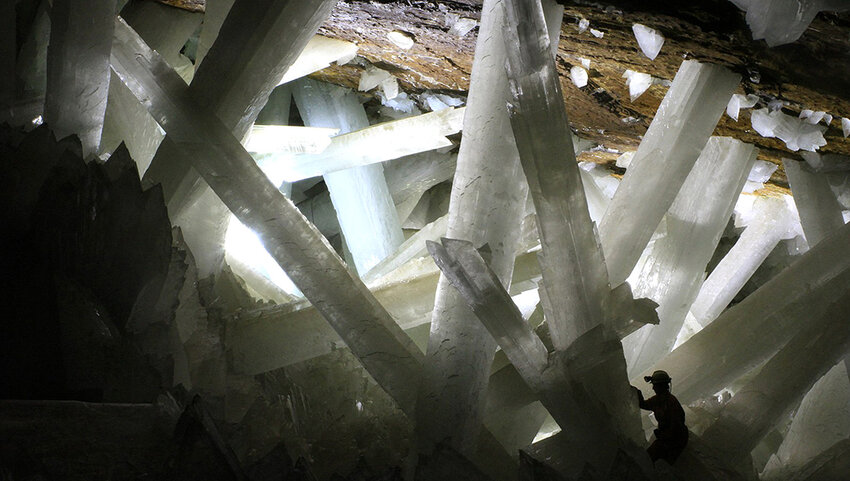
Located deep within Naica Mountain in the Chihuahua Desert of Mexico lie caverns of megalithic gypsum crystals. This is the Cueva de los Cristales. Discovered by miners who pumped water out of the cave in search of silver, zinc, and lead, these mineral behemoths are almost a thousand feet below the Earth’s surface. Created over thousands of years from nearby volcanic activity and calcium-sulfate-enriched water, the crystals crisscross the cave system like steel beams of ivory while smaller crystals carpet the nooks and crannies in between. One look at the mammoth crystals might have you packing your bags but unfortunately, you’ll have to stick to pictures for now. While at one time it was open to exploration, tourism almost ruined the caves and destroyed many of the fragile crystals. Temperatures and general conditions within the cave also make it unsafe to visit for anyone but professionals.
Ban Gioc - China/Vietnam
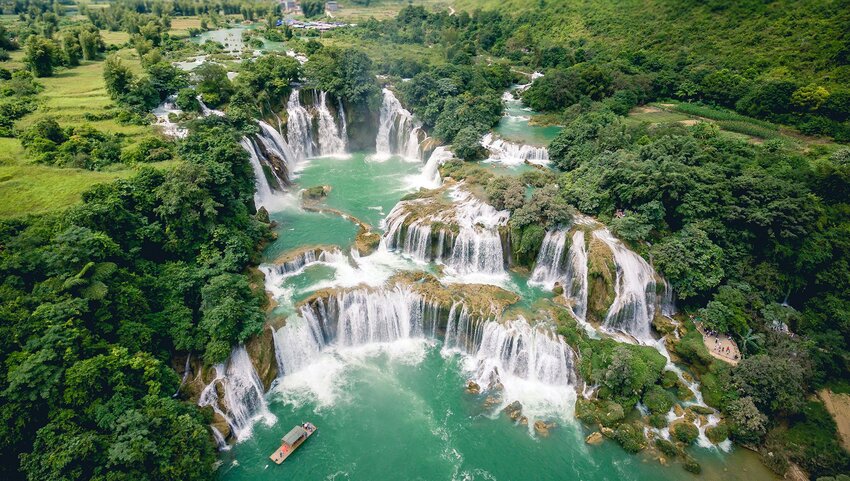
Each year, millions of people visit the cross-border waterfalls of Niagara Falls and Iguazu Falls to check these iconic sites off their bucket list. But in the deep-green forested mountains along the China-Vietnam border is another marvelous cross-border waterfall that not as many people know about. Ban Gioc is technically a group of two waterfalls but during the rainy months, the waterfalls converge into one to create the largest waterfall in Asia. The waterfall drops about 98 feet through trees, cliffs, and limestone pools. Throughout the valley, the thundering sound of the powerful, breathtaking waterfall can be heard.
Mount Thor - Baffin Island, Canada
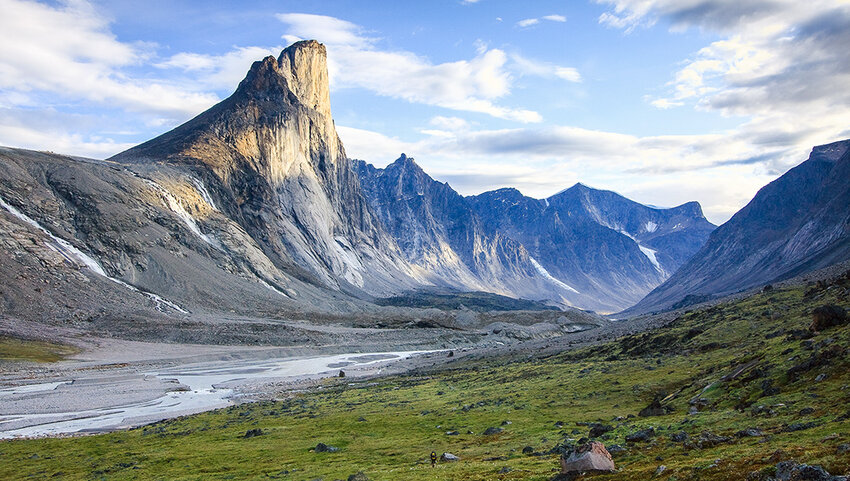
Overlooking the rest of Canada from its perch in the Arctic Circle, Baffin Island is utterly remote. A place of incredible beauty, this is the fourth largest island in the world. While there’s no shortage of geologic masterpieces here, some of which include colossal oceanside cliffs, fjords, and the flat-topped Mount Asgard, Mount Thor stands out above the rest — literally. As the steepest vertical cliff in the world, this peak soars almost a mile into the clouds from base to peak, leaving onlookers bewitched by its ethereal yet imposing silhouette. Although many climbers have tried to summit Mount Thor’s death-defying heights and 105° vert, very few have managed to do so. Named for the Norse god of thunder, the mountain sits on the edge of a valley offering up some of the most mesmerizing landscapes in the world.
Sarakiniko Beach - Milos Island, Greece
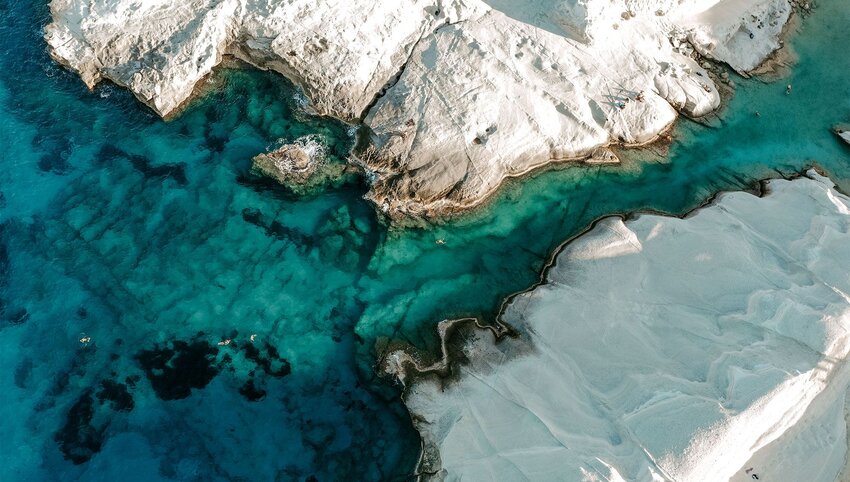
Greece is best known for having some of the world’s most famous archeological wonders like the Acropolis and the Island of Delos. But many people overlook the nation's amazing natural beauty, from its Mediterranean sunsets and beaches to mountains and groves of olive trees. Sarakiniko Beach on Milos Island is one of the most unique beaches in the world. Instead of sand, this beach has a shore made out of white lava rock that can be described as otherworldly. The grayish white hills and crevasses devoid of any vegetation are the closest thing that most people will get to visiting the moon. Cliff jumping into the shimmering turquoise sea and snorkeling to a nearby shipwreck are popular activities here.

